A massage tool will kill your hand. I agree with statement—said Mark 20 years ago because he didn’t know how to hold a massage tool. And he definitely didn’t know anything about two-handed holds.
I can’t blame myself entirely for thinking massage tools did more harm than good because no one that I knew back then was drilling down on how to hold a massage tool without hurting yourself.
Truthfully, I don’t think a lot has changed. Getting the job done still takes precedence over getting the job done without hurting yourself.
The reality is if you want to practice massage for more than a couple of years you need to know how to take care of your body while doing massage.
Enter massage tools.
They will save your hands (and your body) IF you know how to hold them in ways that won’t strain your hands.
How to Hold a Massage Tool Cheat Sheet
First, don’t think of your massage tool as a screwdriver that you have to hold tighter and tighter the harder you work.
Think of your massage tool as an egg that you have to keep from falling over, but if you squeeze it too hard, it will break.
You probably thinking there’s a big, fat contradiction here. If you’re pressing harder with a massage tool AND relaxing your hold (trying not to break the egg), at some point, in order to stabilize the tool in your hand, you have to tighten your grip.
That’s what I used to think, too.
But I found three ways to stabilize a massage tool without having to tighten up on the grip.
- Pin the tool between your hand and the muscle.
- Add a guide finger from the non-tool-holding hand.
- Use two hands.
Pin the Massage Tool
If you want to hurt your hands fast use a massage tool for medium to deep pressure without pinning the massage tool.
What do I mean by pinning the massage tool?
I mean this.
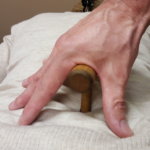 The massage tool is pinned between your hand and the muscle you’re working on.
The massage tool is pinned between your hand and the muscle you’re working on.
Leaning (transferring your body onto the massage tool) is what does the pinning.
Here’s how you pin a massage tool:
[embedyt] https://www.youtube.com/watch?v=LE9P3BOdxAM[/embedyt]
Add a Guide Finger
Once you feel okay with pinning it’s time to add a guide finger(s). Besides giving you more “feel” with the tool, the guide finger/hand helps support the tool.
Pinning and a guide finger together act as highly effective stabilizing forces so that you can loosen your hold on the massage tool.
Here’s how to add a guide finger: Why You’re Not Using Your Massage Tool.
I have one more trick for stabilizing a massage tool: Two-handed holds.
Two-Handed Holds
The advantage of two handed holds from a “relaxing your hand” standpoint is that you can spread the workload (holding the massage tool) out over two hands instead of one. Combine that with leaning and you’ve got some really relaxed hands.
The disadvantage to holding a massage tool with two hands is that there’s a potential to lose your “feel” for what’s underneath your fingers because your guide finger is not down BUT that lose of sensitivity can be overcome in 2 ways.
- Do exploratory strokes without massage tools to determine where tight spots and trigger points are so you know where to use more or less pressure with your massage tool.
- Use two-handed holds that keep parts of your hand in contact with the tissue you’re working on.
Here’s an example of what that looks like:

See how my knuckles and fingers are contacting the clients back?
Now look even closer. My left index finger and my right index knuckle are next to the massage tool tip. In addition to being tool stabilizers, they’re also sensors which allow me to palpate the tissue where the tool tip will be placed next.
There are tons of different ways to do two-handed holds.

Here I’m stabilizing a T-bar with my fingers wrapped around the top of the foot.
There is zero strain on my hands.
I could hold this position forever.

In this picture I’m using two hands to hold a TheraPress massage tool.
My finger tips on my left hand are making contact with the client’s back.
Again, there is no strain to my hands or body.
Best Two-Handed Holds
So, what are the best two-handed holds? The ones that makes your hands feel good.
That means you’re going to have to experiment. Here are my suggestions for experimenting.
- Pick a tool that feels comfortable in your hands.
- Figure out where that tool works best. (A tool that’s great for the feet because it has a broader tip may be too big for the neck.)
- Pin the tool with one hand and then bring the other hand on the tool for support.
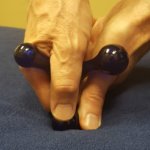 Allow you hands to move and experiment with different positions.
Allow you hands to move and experiment with different positions.
Eventually, you’ll discover the two-handed holds that are easy on your hands.
Don’t forget to lean when generating medium to deep pressure.
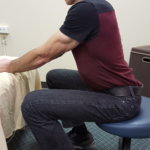 By the way, leaning is not just for standing.
By the way, leaning is not just for standing.
You can lean when you sit, too.
Want to learn more about how to hold a massage tool (and how to get more massage clients)? Join my email group and get my weekly articles. It’s free:-)
Massage Tools Online Course
 If you’re ready to jump into massage tools, I have an online, home-study course that will teach you how to fearlessly and effectively use massage tools.
If you’re ready to jump into massage tools, I have an online, home-study course that will teach you how to fearlessly and effectively use massage tools.
It’s called, surprisingly, How to Use Massage Tools (Fearlessly and Effectively). It’s a 2.5 CEU course, NCBTMB approved. Check it out here.
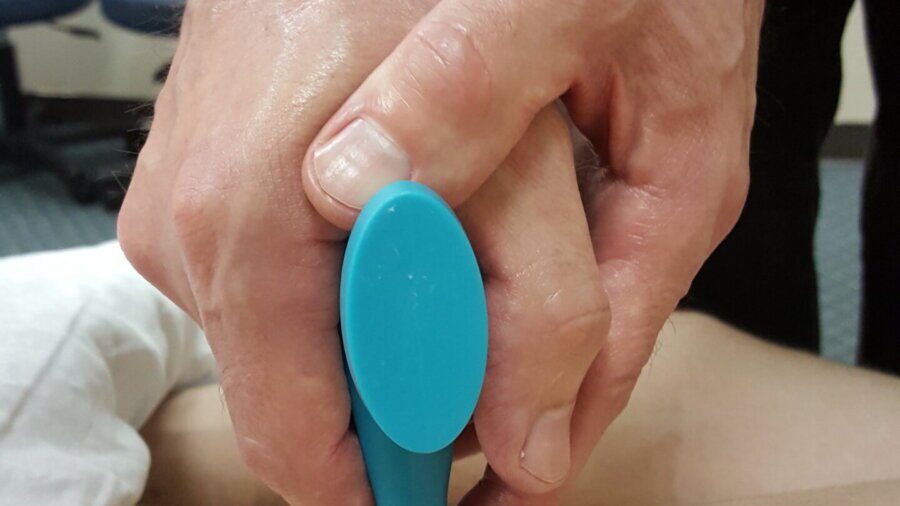


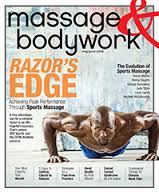
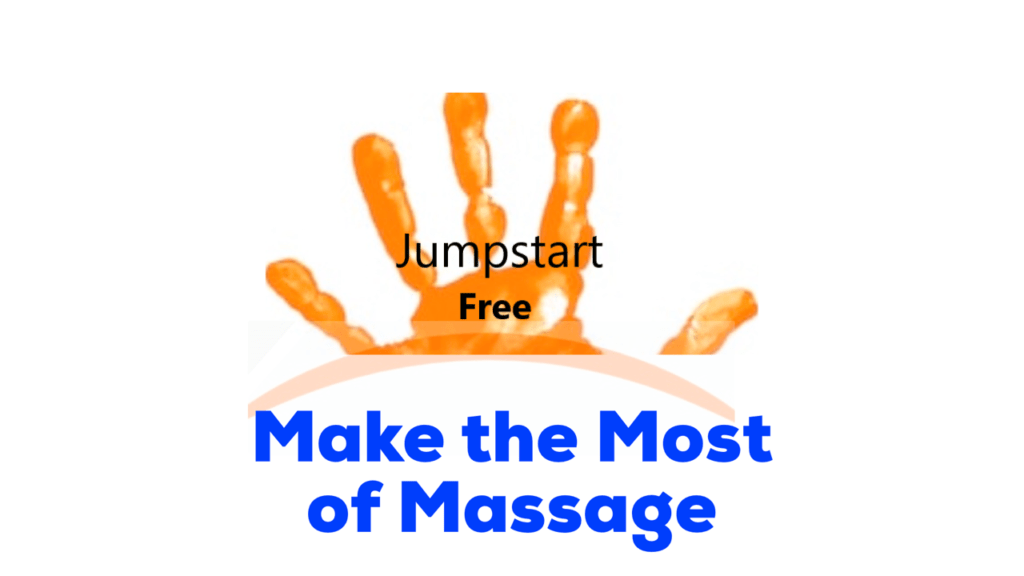

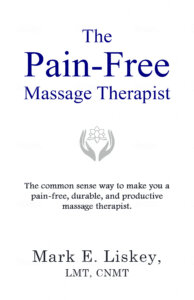
Comments on this entry are closed.
I have always shied away from using massage tools, but you make it seem so doable! How do your clients react to having work with tools as opposed to hands? This has been one of my reservations with implementing tools.
Hey Ali, thanks for the comment! 99% of my clients are good with tools. Many prefer them in certain areas over hands. Using a guide finger(s) helps with making the tool transition not abrupt. This video about transitions can help you get started using massage tools: https://www.youtube.com/watch?v=RutxuzcSj5g&t=107s Also, I have a massage tools DIY e-manual coming out soon. Let me know how it goes if you try incorporating massage tools into your massage!